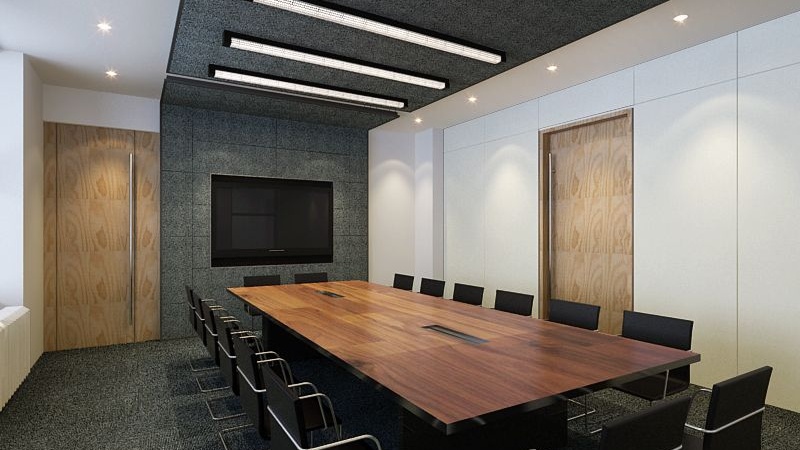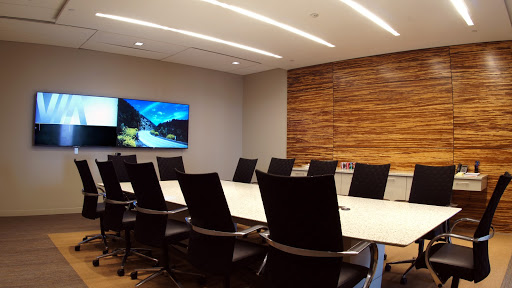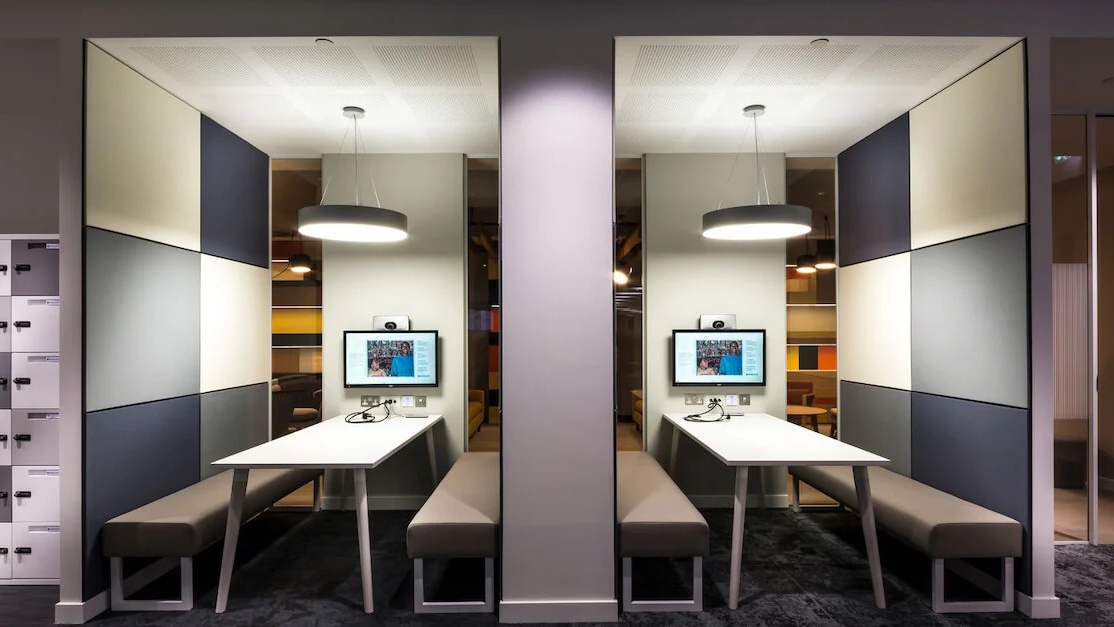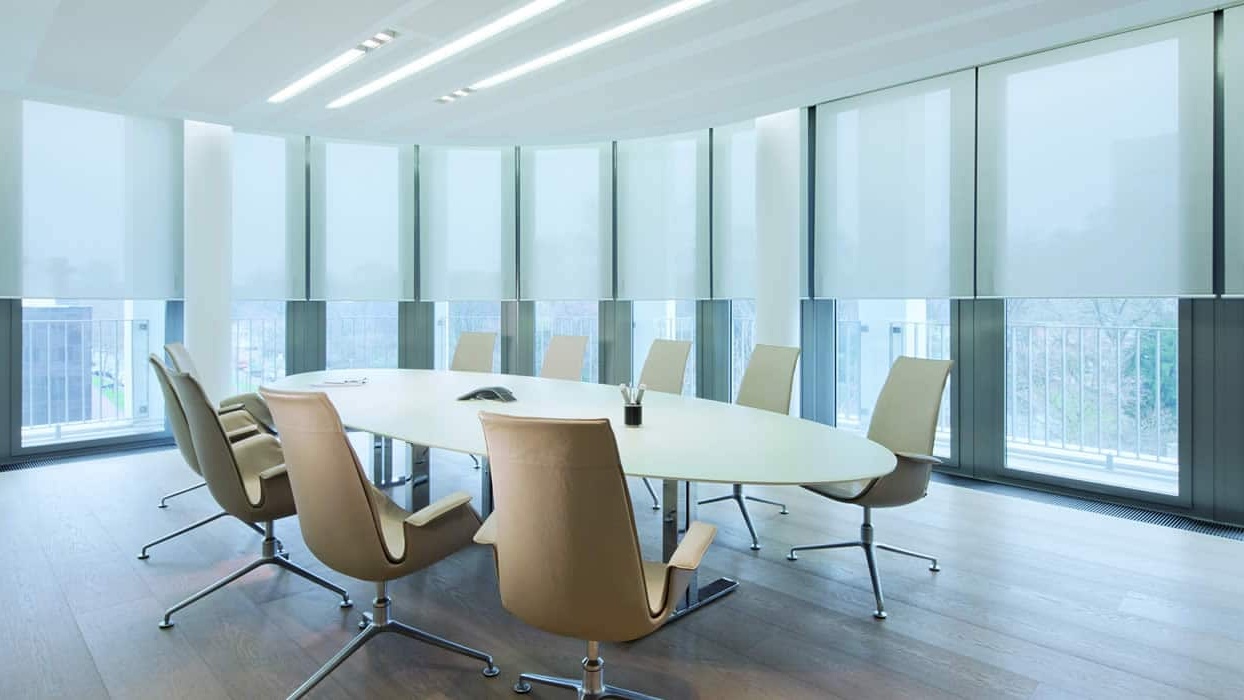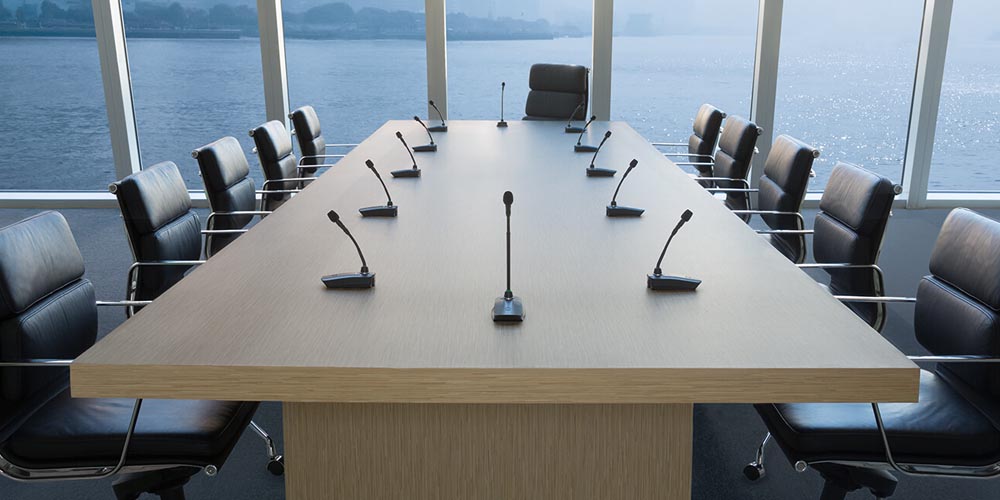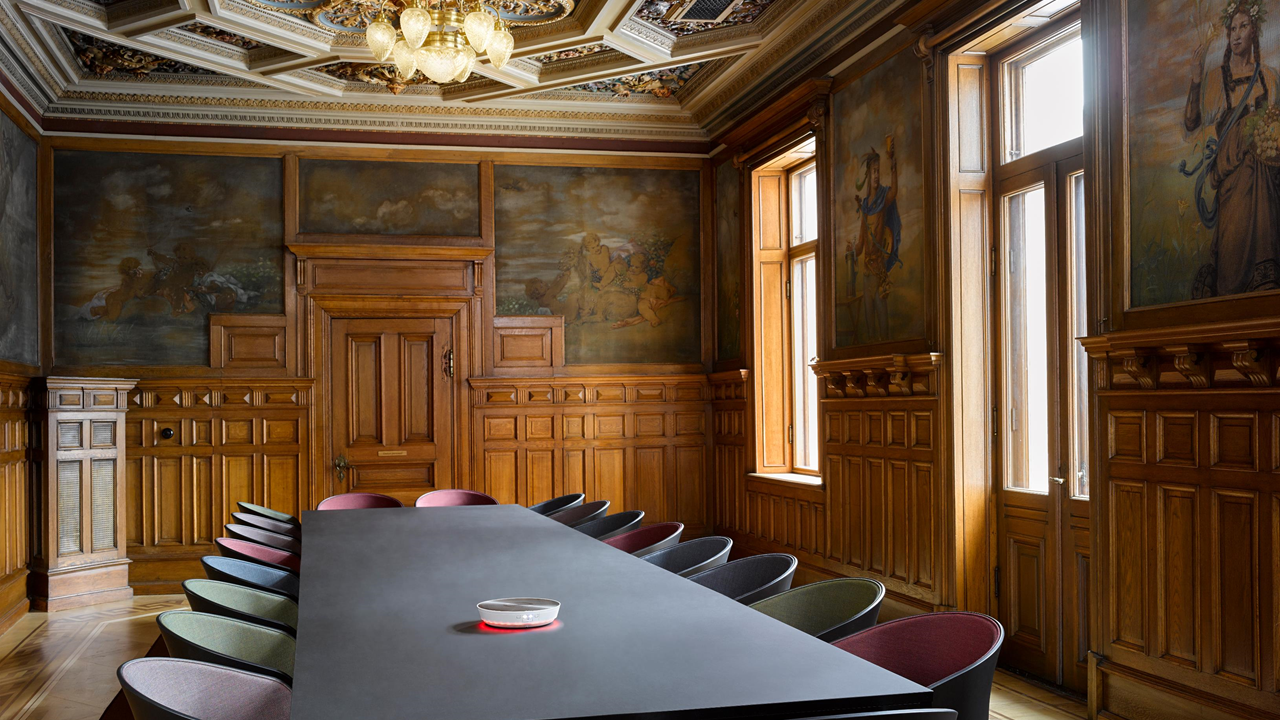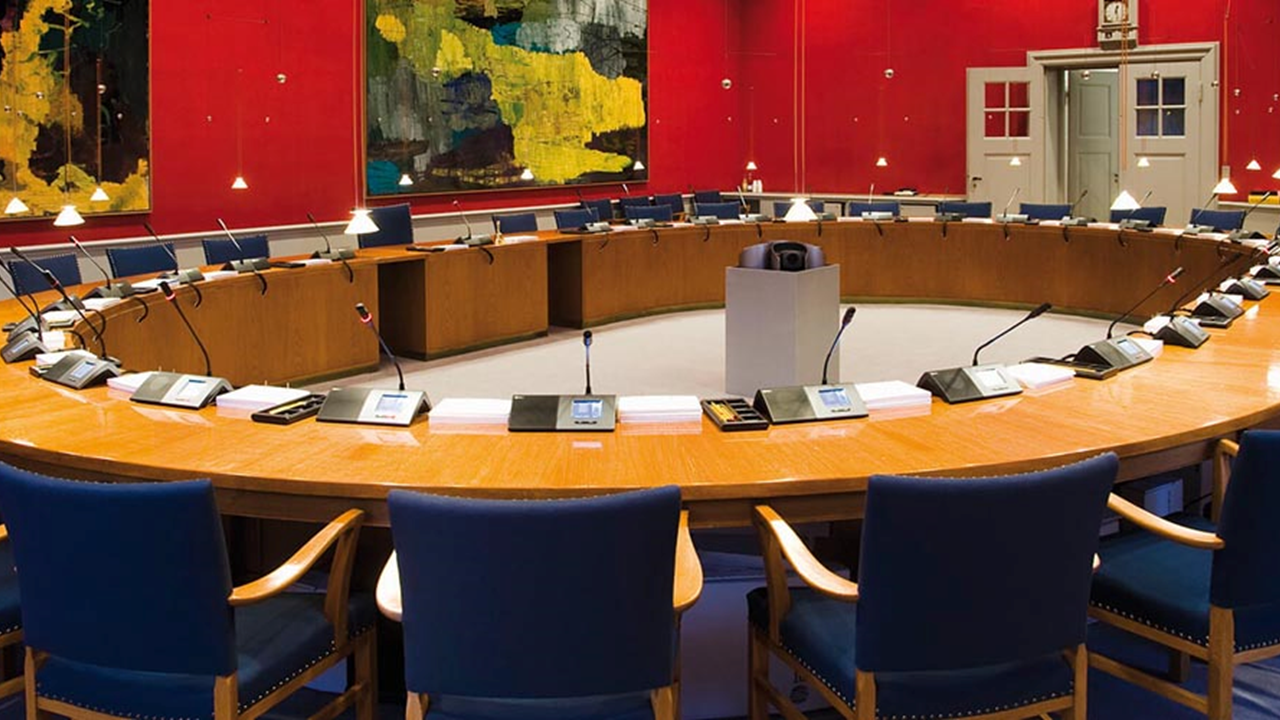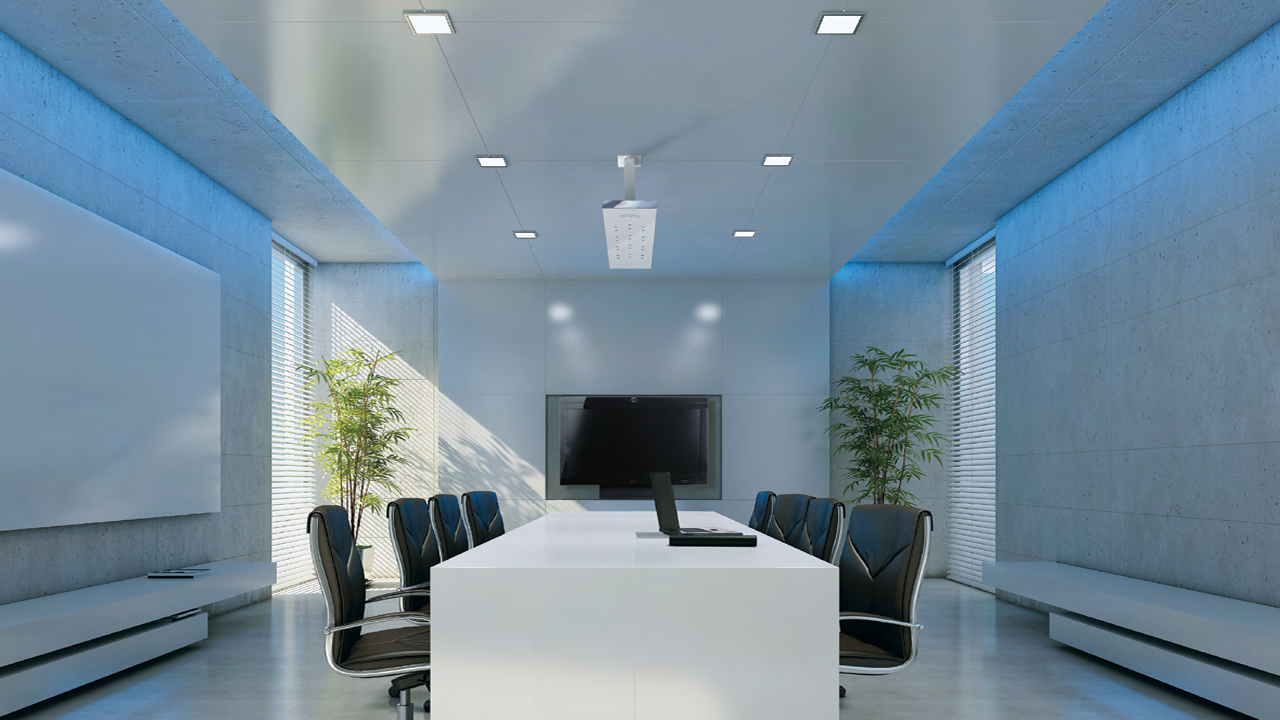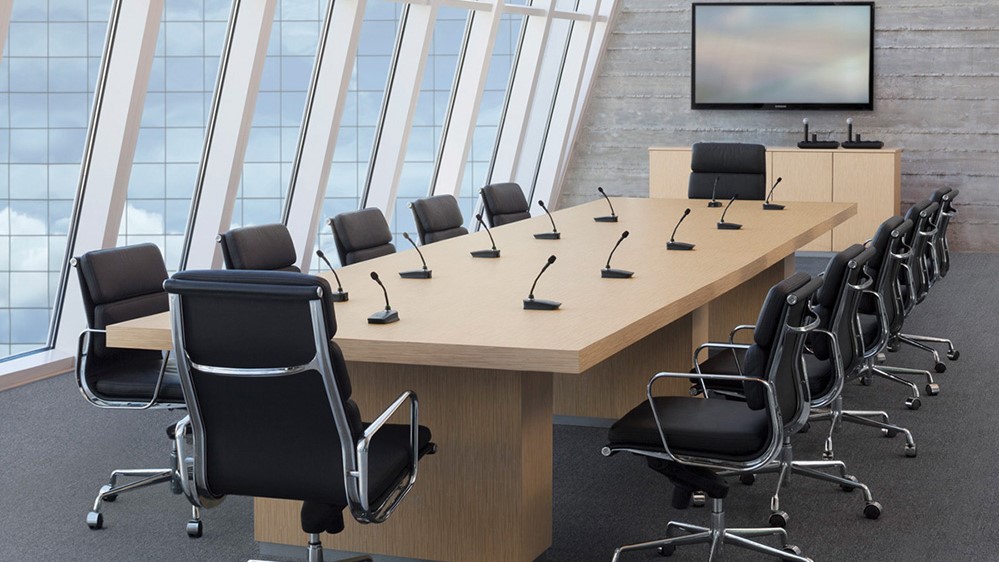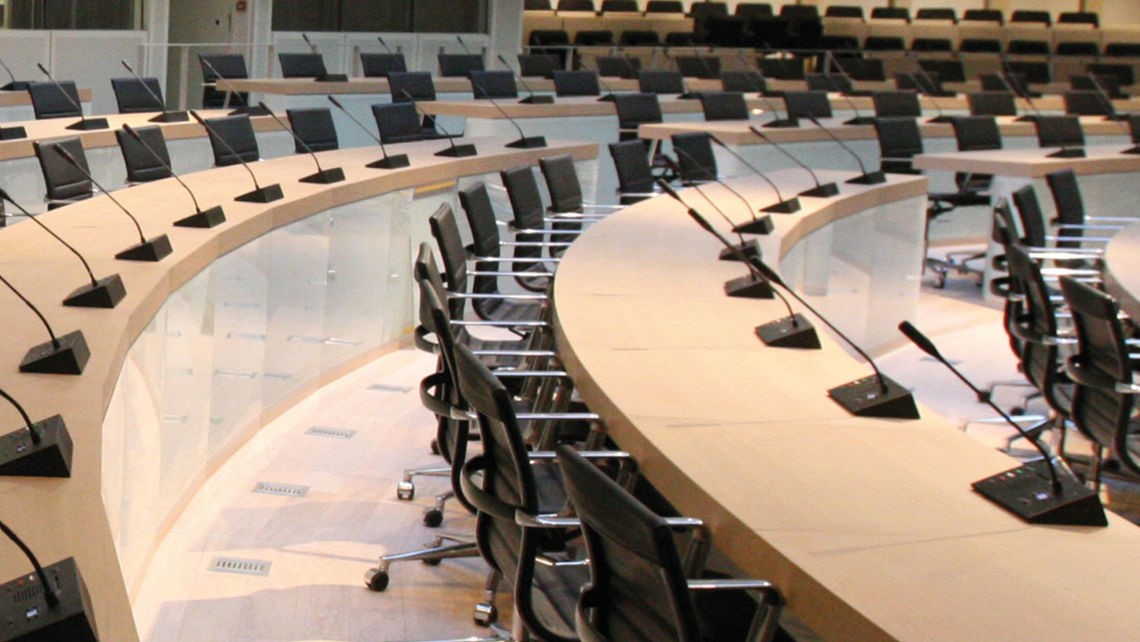Why to focus on acoustics?
Effective communication is the cornerstone of productive meetings, and poor acoustics can hinder this. Whether you’re conducting virtual meetings or in-person collaborations, the acoustics of your meeting room play a crucial role in ensuring everyone can hear and understand each other clearly. Poor acoustics can lead to distractions, miscommunications, and a decrease in overall productivity. Fortunately, improving your meeting room’s acoustics doesn’t require a complete overhaul. With some thoughtful design and practical solutions, you can create a more conducive environment for focused discussions.
1. Understand the Problem: Identify Common Acoustical Issues
Before jumping into solutions, it’s essential to understand what acoustic problems might be present in your meeting room. Common issues include:
- Echo and Reverberation: If sound bounces off hard surfaces (like walls, windows, and floors), it can create echoes, making speech unclear and difficult to understand.
- Background Noise: External noise, like traffic, air conditioning units, or office equipment, can interfere with discussions and make it hard to focus.
- Sound Isolation: Poorly insulated rooms allow noise to travel between spaces, distracting participants in nearby rooms.
- Poor Speech Intelligibility: When sound is poorly distributed in the room, some people might hear others clearly while others struggle.
2. Use Acoustic Panels and Sound Absorption Materials
To reduce echo and reverberation, one of the most effective ways to improve acoustics is to install acoustic panels. These panels are designed to absorb sound waves and prevent them from bouncing around the room.
- Fabric-Wrapped Panels: These are ideal for meeting rooms because they come in various designs and colors, allowing you to maintain the room’s aesthetics while improving sound quality.
- Ceiling Tiles: Installing acoustic ceiling tiles or suspended baffles can help in large rooms or areas with high ceilings.
- Carpeting or Rugs: Hard floors reflect sound, so adding carpets or rugs can help reduce noise. Opt for thick, dense materials that can absorb sound effectively.
3. Control Background Noise
External and internal noise can create a significant distraction. Here are a few ways to tackle it:
- Sealing Gaps and Cracks: Use weatherstripping around doors and windows to prevent noise from entering the room. Small gaps can allow a surprising amount of sound to travel.
- White Noise Machines: These devices produce a consistent sound to mask distracting noises. White noise can help neutralize outside disturbances, making it easier for people to focus on the meeting.
- Soundproofing Windows: If external noise is a significant problem, consider soundproofing your windows with laminated glass or window inserts to reduce noise intrusion.
4. Consider the Room’s Layout and Furnishings
The layout and furniture in your meeting room can impact acoustics. Here’s how to make the most of your space:
- Avoid Parallel Walls: Parallel walls can lead to standing waves (unwanted sound buildup). If possible, angle the walls to avoid this effect or use a combination of acoustical treatments and soft materials.
- Furniture Placement: The right positioning of furniture can help manage sound flow. Large tables and comfortable chairs can help absorb sound and prevent it from bouncing around.
- Sound Absorbing Furniture: Opt for upholstered furniture, such as chairs with fabric or cushions, to reduce sound reflections.
5. Optimize Technology for Virtual Meetings
In today’s hybrid working environment, many meetings involve remote participants. To improve acoustics for virtual meetings, focus on technology:
- Microphones: Invest in high-quality microphones that pick up voices clearly while minimizing background noise. Condenser microphones with noise-canceling capabilities are ideal.
- Speakers: Ensure the speakers are positioned correctly so everyone in the room can hear clearly without distortion. Consider using a sound system with built-in equalization to enhance clarity.
- Video Conferencing Equipment: Make sure the audio equipment is compatible with your conferencing system, and avoid relying solely on laptop speakers or built-in microphones. They often don’t provide the best sound quality.
6. Add Soft Surfaces to Dampen Sound
Hard surfaces, like glass, metal, and concrete, reflect sound waves, causing noise issues. To combat this:
- Soft Wall Treatments: Adding drapes, fabric wall coverings, or acoustic wallpapers can greatly reduce sound reflections.
- Furniture with Soft Materials: Leather chairs, metal desks, and glass tables contribute to sound reflection. Opt for cushioned chairs, fabric-covered desks, or wooden tables to absorb sound.
- Acoustic Wall Art: Functional and aesthetically pleasing, acoustic wall art can be designed to complement your room’s style while helping control sound.
7. Proper Room Size and Shape
While this option may not be feasible in every situation, the size and shape of your room can affect sound quality. Smaller rooms tend to amplify sound, while larger rooms can suffer from poor sound distribution.
- Room Size: If possible, choose a meeting room that’s appropriately sized for the number of participants. Too large a room for a small group will create difficulty in hearing each other, while too small a room can result in amplified sound issues.
- Ceiling Height: High ceilings can lead to sound scattering. If high ceilings are unavoidable, consider using sound baffles or diffusers to help disperse sound evenly.
8. Test and Adjust Acoustics Over Time
Once you’ve implemented changes, it’s essential to test the acoustics regularly. Invite team members to attend meetings and provide feedback on sound clarity. If needed, make adjustments based on their feedback.
- Use Acoustic Measurement Tools: Tools like a sound level meter can help measure the room’s acoustic properties and identify areas that need further improvement.
9. Keep the Room Organized
A cluttered room can contribute to poor acoustics. Keep the space tidy, as excessive clutter can create unpredictable sound reflections, particularly from surfaces that have no absorptive properties. Keeping the space organized also helps in creating a conducive environment for concentration.
Good acoustics are a key factor in ensuring your meetings are productive, clear, and effective. By incorporating a combination of acoustic panels, sound-absorbing materials, proper furniture, and effective technology, you can drastically improve your meeting room’s acoustics. Not only will this reduce distractions and enhance communication, but it will also create an overall more professional and comfortable environment for your team. The result will be better discussions, clearer presentations, and more successful meetings.
We’d love To Meet You In Person Or Via The Web!
Main Office: Suite M-01, 512, 3rd Street, Abu Dhabi, UAE
Phone: + 971 2 6767019
WhatsApp: + 971 55 3979668
Email: web@OfficePlusUAE.com

